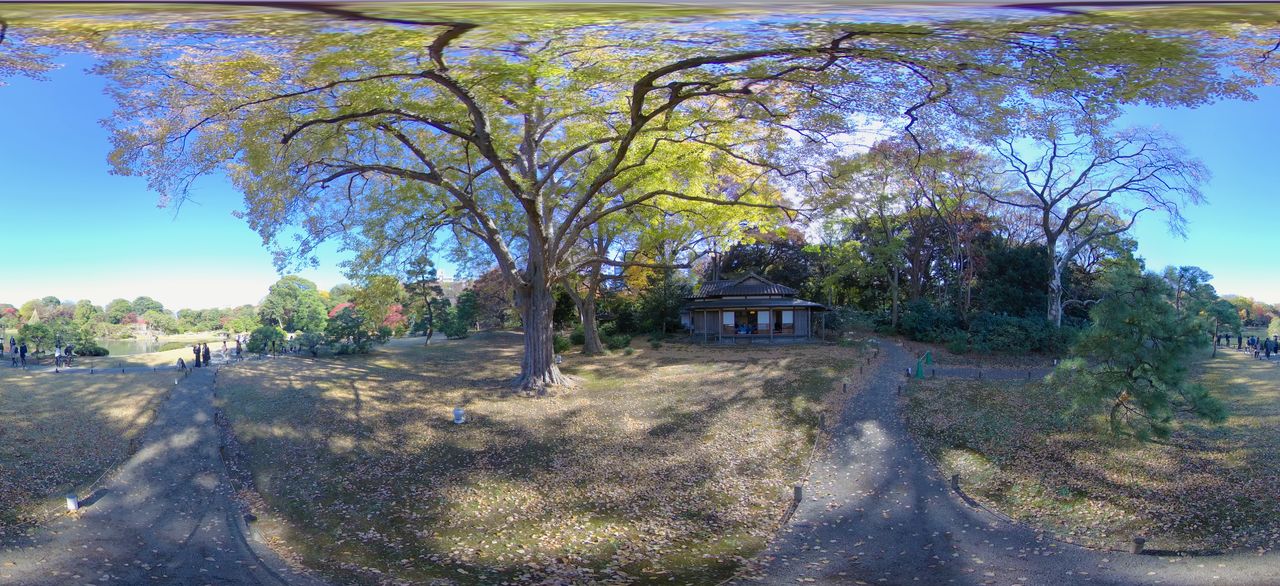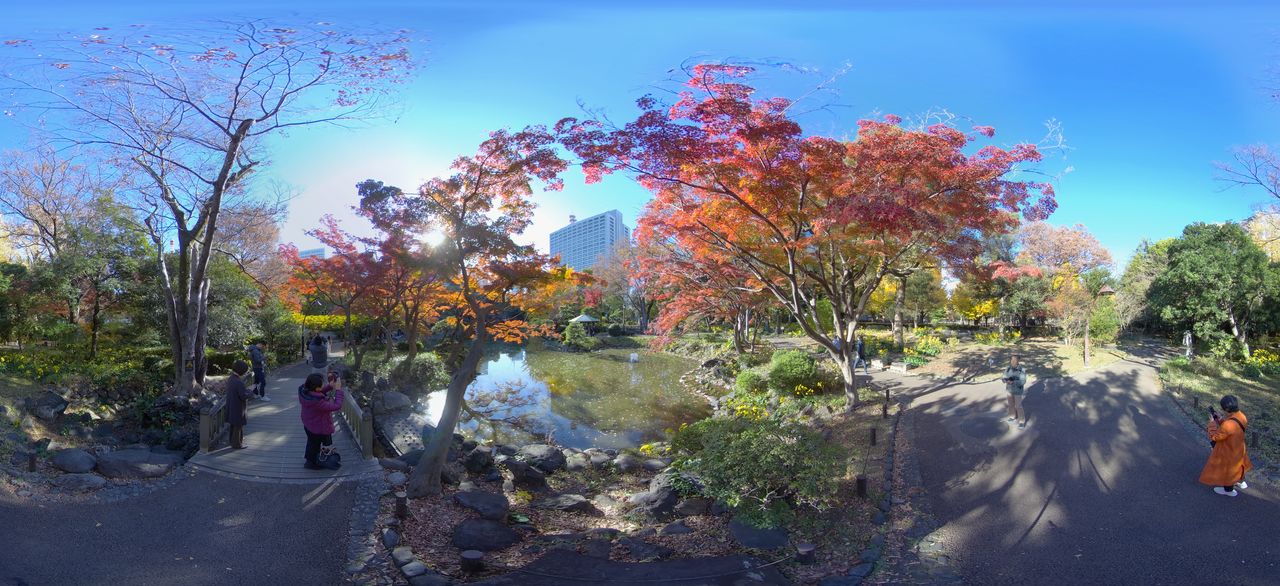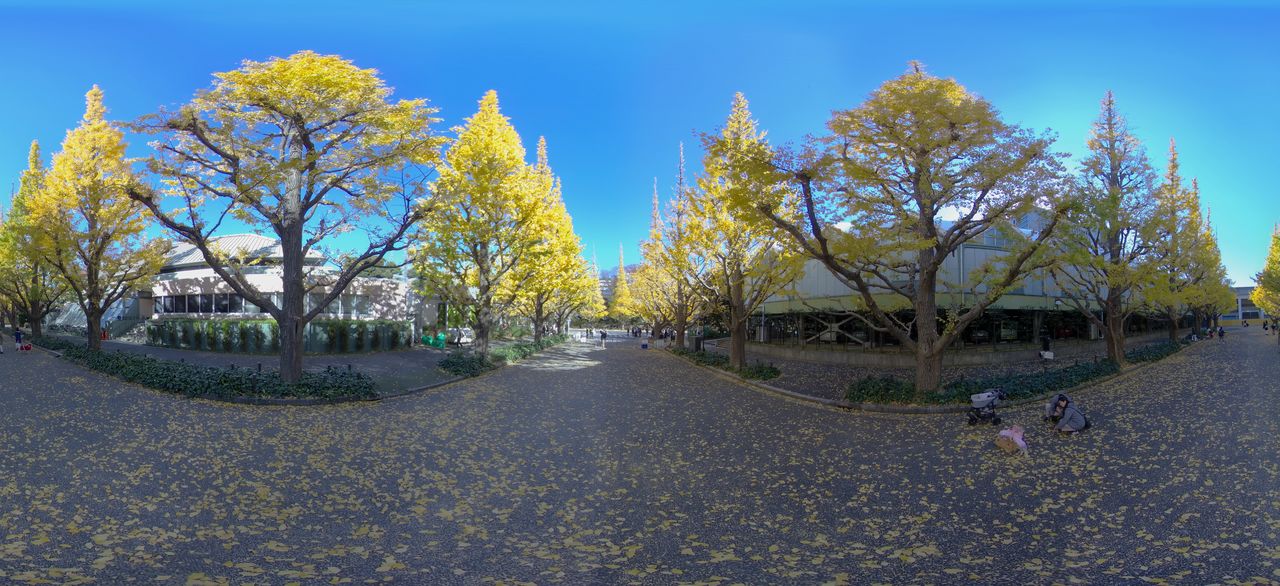
Foliage-Viewing in Tokyo: A Video Tour
JapanIn video
Images Guide to Japan Environment- English
- 日本語
- 简体字
- 繁體字
- Français
- Español
- العربية
- Русский
◆Viewing the 360º video◆
- On PC, click and drag your mouse cursor to look around.
- In the YouTube app on your smartphone or tablet, the view changes with the movement of your device. You can also swipe to move the view around.
- Using VR goggles or headsets makes the experience all the more immersive!
The Colors of Autumn
Leaves turn color as autumn moves toward winter. Seemingly giving a last gasp of life, foliage develops vivid coloring just before withering and dropping to the ground. This natural phenomenon, which stirs the emotions of Japanese, has been recorded for centuries, beginning with classical poetry collections more than a millennium ago. For example, over 100 poems, more than 20% of the total contained in the Man’yōshū poetry anthology, extol the glories of fiery maples in autumn.
In more recent times, foliage viewing in urban or rural settings became an established form of recreation during the Edo period (1603–1868). Some prominent samurai also planted maples, azaleas, and ginkgoes in the gardens of their estates; many gardens in Tokyo famous for their autumn foliage are situated on these former estates.
Foliage just beginning to color at Rikugien. The garden is lit up at night during the season. (© Somese Naoto)
One of Edo’s (present-day Tokyo) most famous gardens is Rikugien, in Bunkyō. It was created between 1695 and 1702 under the supervision of Yanagisawa Yoshiyasu (1658–1714), a retainer to fifth Tokugawa shōgun Tokugawa Tsunayoshi (1646–1709). Well-versed in waka poetry, Yanagisawa recreated 88 scenic views mentioned in the Man’yōshū and the Kokin wakashū poetry collections in the garden’s ponds and hillocks. The garden’s 560 trees, which include dōdan-tsutsuji flowering shrubs and Japanese maples erupting in brilliant colors, create a sight that would gladden a poet’s heart.
Hibiya Park, near the Imperial Palace grounds. Maples, cherries, and a variety of Western and Japanese flowers delight strollers in every season. (© Somese Naoto)
In addition to traditional Japanese gardens, many Tokyo parks also offer fine autumn foliage. Hibiya Park in Chiyoda was created in 1903 as Japan’s first Western-style park. It features a fountain topped by a graceful crane, with bright red maples reflected in its waters and a ginkgo tree reputed to be over 350 years old. When road widening works on Hibiya-dōri threatened the tree, Honda Seiroku (1866–1952), the park’s designer, vowed to quit if it was cut down. The tree was spared.
Golden yellow ginkgoes line the avenue outside the Chichibunomiya Rugby Stadium. The area is slated for redevelopment in the near future. (© Somese Naoto)
The ginkgo is the official tree of the Tokyo metropolis. Ginkgoes line many of its avenues, the most famous of which is undoubtedly that at Meiji Jingū Gaien (Outer Garden), created after the 1923 Great Kantō Earthquake. Every year crowds flock to the area to stroll along the 300-meter stretch of road planted with more than 140 of the majestic trees.
The colorful foliage of autumn has been likened to the elaborate brocade of Japan’s traditional textiles. Enjoy the timeless beauty of autumn in Tokyo in these VR images.
(Originally published in Japanese. Banner photo: The temple Kuhonbutsu Jōshinji, in Setagaya, whose precincts evoke famous gardens in Kyoto. © Somese Naoto.)




